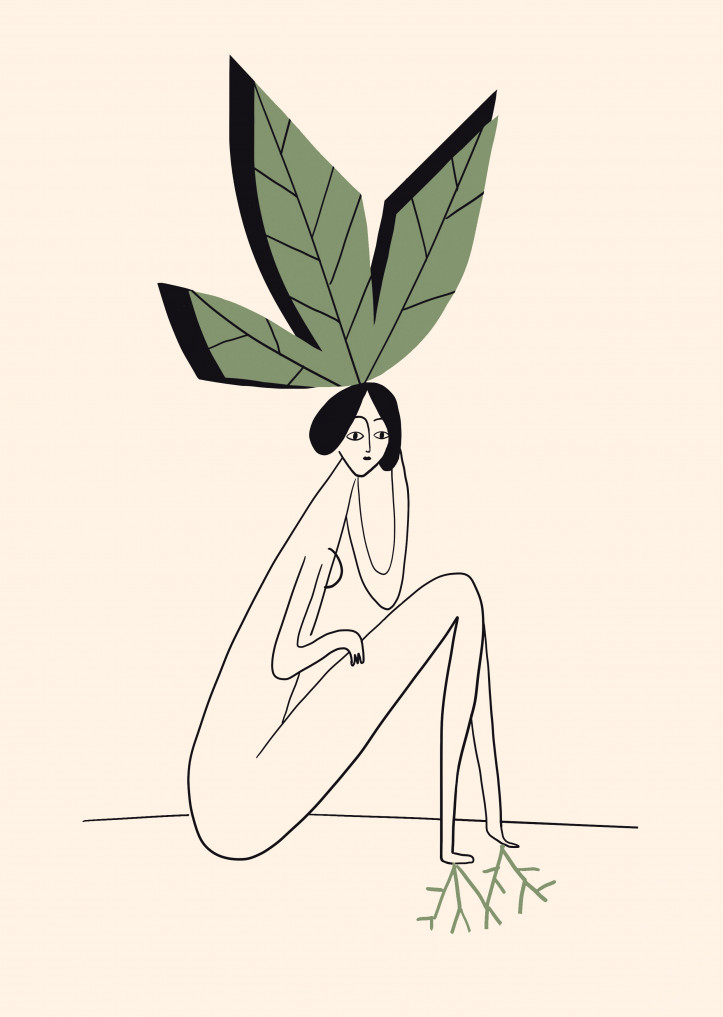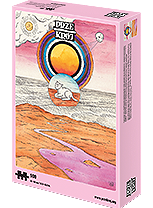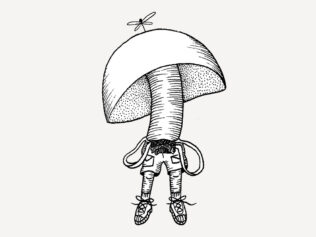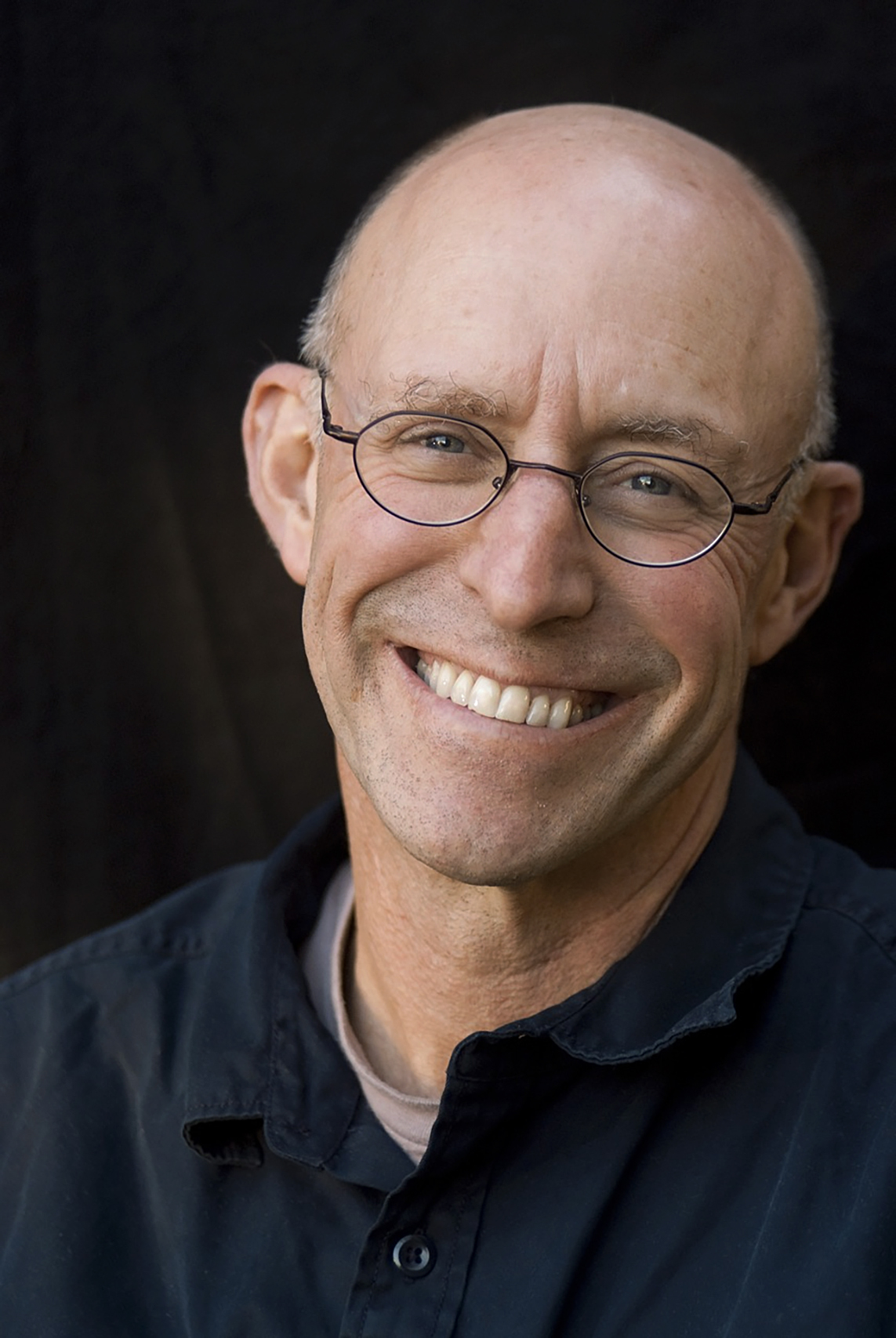
Psychoactive mushrooms make up a very small part of the fungi kingdom, but their ‘symbiotic’ relationship with humans places them at the centre of discussions about the origin and future of our species and the planet.
Two groups can be distinguished among advocates of psychedelics who believe in their power to transform the world. The technocrats base their thinking on scientific research, recognize the therapeutic role of such substances, and believe that they can help people overcome personal crises. The spiritual revolutionaries, on the other hand, have more far-reaching plans. They believe that psychedelics – especially those originating in the natural world – should be used to shape a new type of ecological sensitivity, help to stop the degradation of the planet, and even contribute to a radical reorganization of social life. The histories of these two trends have often intertwined, and at times their representatives have switched places unexpectedly.
The conservative and the hippies
In 1957, amateur mycologist R. Gordon Wasson published a report in “Life” magazine from a small village in the mountainous state of Oaxaca, Mexico. The purpose of his trip was to participate in a session led by local curandera (healer) Maria Sabina, who used ‘divine mushrooms’ in her shamanic remedies. What inspired him to do this research? 30 years earlier, he and his wife had taken a trip through the woods of the Catskill Mountains in New York State. Valentina picked some nice-looking mushrooms and, to her husband’s horror, prepared a dinner from them in their mountain cabin. Like many Westerners, Wasson was a mycophobe and suspected all mushrooms were poisonous. He was convinced he’d wake up next to a corpse, but the ‘mushroom bug’ turned out to be contagious in a completely different way: it initiated a great fascination which resulted in Wasson studying the role of mushrooms in the development of civilization. This adventure led him to the village of Huautla de Jiménez, to verify the truth of reports of the cult of vision-inducing mushrooms still alive among the Mazatec. “We had come from afar to attend a mushroom rite but had expected nothing so staggering as the virtuosity of the performing cuanderas and the astonishing effects of the mushrooms,” Wasson reported. “For the first time the word ecstasy took on real meaning. For the first time it did not mean someone else’s state of mind.”
This vivid account, published in a widely read magazine, triggered the course of events that led to a social revolution. Three years later, renowned psychologist Timothy Leary was on holiday in Mexico with a group of friends. Their associate Gerhardt Braun, an anthropologist from Mexico City and a researcher of pre-conquest Aztec texts, visited their villa situated in the shadow of a volcano. The texts he specialized in contained references to mushrooms used by the Indigenous fortune-tellers and priests, known as teonanácatl (in Nahuatl, the most widespread of the Uto-Aztec languages, this word means ‘body of the gods’). For centuries, missionaries had been trying to eradicate the custom of mushroom rituals, which they associated with possession. Apparently, they were unsuccessful, because Braun had managed to obtain some of these mushrooms at a market in the town of San Pedro and brought them to the Spanish villa occupied by the Americans. Leary’s mind “turned 180 degrees for the first time”. As he recalled: “I learned more about… my brain and its possibilities… in the five hours after taking these mushrooms than… in the preceding 15 years of studying and doing research.”
The avalanche was set in motion, and after his return, Leary set up the Harvard Psilocybin Project at his alma mater to investigate the usefulness of this substance in therapeutic work. Due to the increasing radicalization of the originator’s views and the reservations of the scientific establishment, the experiment eventually had to be moved outside the university. A stream of visions flooded the US and the rest of the Western world. Sam Wasson, a member of the board at conservative-affiliated Wall Street firm J.P. Morgan & Co., an involuntary pioneer of the cultural breakthrough, had little sympathy for the long-haired rebels. Like his friend Aldous Huxley, he believed that entheogens – as he liked to describe substances that induce mystical states – should be reserved for an elite who were suitably prepared for spiritual experiences. Well, mushrooms are tricksters.
Criminalized dreams
In the Western world, psychedelics have been used therapeutically since the 1950s. They have produced good results in the treatment of alcoholism, among other conditions. As long as hallucinogens were associated with a medical context, or an object of interest to intellectuals of Huxley’s ilk, they were not viewed as dangerous drugs. However, the hippie revolt that called for openness to new dimensions of experience and negation of the social order changed this state of affairs. The main weapon of the flower children was lysergic acid diethylamide – LSD for short – which the authorities quickly recognized as a public enemy. It was a similar story for psilocybin, the active ingredient in mushrooms. In 1970, both were placed on the List of Prohibited Substances in the US. A year later, President Nixon declared a ‘war on drugs’ and the United Nations passed the Convention on Psychotropic Substances. Psychedelics were thus equated with really dangerous addictive drugs. The fact that they do not exhibit addictive properties was of little relevance. The prohibitive approach was based not on science, but on the fears of politicians who suspected – rightly, as it happens – that ‘psilocybes’ had the capacity to reorganize systems. However, the criminalization of psychedelic substances proved to be ineffective – today, hallucinogenic mushrooms can be found all over the world, even in places where they don’t occur naturally, thanks to grow-at-home kits sold online. As a result of repressive policies, research on this fascinating compound was put on hold for over three decades.
In prison, in chapel
Psilocybin was isolated in 1958 from Psilocybe mexicana mushrooms by Albert Hofmann, the Swiss chemist who had previously synthesized LSD in the laboratories of the pharmaceutical company Sandoz. The firm’s American branch provided unlimited quantities of the promising compound for the purposes of scientific research. Timothy Leary took advantage of this proposal, and together with Richard Alpert (later known as Ram Dass) and Ralph Metzner, he conducted a series of experiments as part of the Harvard Psilocybin Project, the most famous of which were the administration of psilocybin to inmates of Concord Prison, and the ‘Good Friday Experiment’.
The former aimed to get inmates to change their self-perception. The success of the experiment was to be confirmed by a reduced recidivism rate, but this was not achieved, mainly due to an incorrect assumption – the criminogenic factor was deemed to be the inmates’ mental attitudes, while the influence of social environment was ignored. The ‘permit’ phase of the entire project was not properly organized. Even so, 88% of the 32 inmates said they had learned something important about themselves by the end of the two-year experiment, and 62% concluded that their psilocybin sessions had helped to change their lives for the better.

More satisfactory results were achieved in a study initiated by theology student Walter Norman Pahnke and supervised by Leary. On Good Friday 1962, in Marsh Chapel on Boston University campus, mass attendees (volunteer theology students) were divided into two groups. One group was given a fairly high dose of psilocybin, and the other an active placebo – nicotinic acid, which induces a tingling effect and was supposed to mimic the effects of psilocybin. As the congregation listened to the sermon, it soon became clear who belonged to which group. Those who had taken psilocybin lay down on the pews and experienced mystical revelations as the less fortunate students in the placebo group looked on.
Conclusions were drawn based on a discussion following the mass and a survey conducted six months later. Nine out of 10 people in the psychedelic group scored higher in each of nine aspects of a ‘mystical experience’ than the students in the placebo group. One member of the psilocybin group, who had not been touched by the absolute, fled the chapel and had to be administered a sedative, which was initially concealed in the study results. The parameters of the ‘mystical experience’ were established according to the work of W.T. Stace, who identified nine criteria: a sense of internal and external unity (i.e. loss of ego without loss of consciousness and a sense of unity with one’s surroundings); transcendence of time and space; a deeply felt positive mood; a sense of sacredness; objectivity and reality (i.e. an irrational sense of enlightenment); paradoxicality (i.e. the loss of empirical information in a void that is simultaneously full); ineffability; transience of the mystical state; and persisting positive changes in attitudes and behaviour towards oneself and others.
A quarter of a century later, researcher Rick Doblin published the results of a long-term follow-up study. The ‘mystics’ claimed the Good Friday experience had had a big impact on their life and priestly work in the years following the experiment. Psychedelics not only proved useful in the study of mystical states, but also allowed some participants of the experiment to gain insights that led to long-lasting positive behavioural changes.
The Psychedelic Renaissance
More recent research on psilocybin in the context of the attainment of religious ecstasy has been carried out by Roland Griffiths. His studies conducted in 2006 helped to determine the dose required to enter a psychedelic state: 20-30 mg of pure psilocybin, which is used in laboratory research or therapeutic practice. Higher dosages usually lead to confusion and undesirable states. Lower doses, on the other hand, enable people to gain psychological insights – they reveal the mechanisms that drive different people and allow access to the repressed information that underlies erroneous self-judgements. It appears that under the influence of psilocybin, the human psyche can undergo permanent change.
These properties have also been confirmed by the research of Robin Carhart-Harris. He uses functional magnetic resonance imaging (fMRI), which reveals activity in specific areas of the brain. In patients who have been administered psilocybin, decreased activity is observed in the medial prefrontal cortex, which is responsible for elevated emotional responses. In people with depression, this area of the brain is usually overactive. Carhart-Harris’s research therefore provides additional neurological evidence for the usefulness of psilocybin in fighting depression.
Carhart-Harris announced his most interesting discovery about the effects of psychedelics on the brain in 2016, when he presented a study on the disruption of brain networks. Psychedelics, which are agonists of serotonin receptors, can reshuffle our brain’s default system and connect ‘normally’ autonomic neural networks, leading to a breakdown of the ego, thus explaining the ‘ego lapse’ experienced by users of these drugs. The new networking, the connection of previously inactive neural connections between separate circuits of the brain, is also responsible for the feeling of a new quality of contact with the self and the environment, as well as provoking reflection on what consciousness is.
This research belongs to what the famous British physician and scientist Ben Sessa has termed ‘the Psychedelic Renaissance’. In his book of the same title, he presents a wealth of new research and demonstrates a gradual shift in society’s approach to psychedelics. Sessa himself is head of a new clinic for psilocybin therapy that is due to open in Bristol. In Denver, Colorado, a tumultuous referendum saw a minimal vote (50.6%) in favour of decriminalizing the possession of mushrooms, a result driven mainly by young people. Meanwhile, in Poland, the first grant has recently been awarded for research into the usefulness of psilocybin in the treatment of neurodegenerative diseases. It looks like nothing can stop the psylexpress now.
The fusion of matter and spirit
Outside the laboratory, our guide on the longest psychedelic journey has been Terence McKenna, whose theories, unrestrained by the burden of scientific objectivity, captivate with their bold vision, despite their speculative nature. He was probably the most radical messenger of the mushroom world, which is hardly surprising considering his initiatory journey, which he described years later in True Hallucinations: Being an Account of the Author’s Extraordinary Adventures in the Devil’s Paradise (originally published in 1989). In 1971, 24-year-old Terence and his younger brother Dennis – a biology student, along with their friends Vanessa – an anthropologist and photographer, Dave – a sculptor, and Ev – the only person in the group who spoke Spanish, travelled to the Colombian Amazon in search of ayahuasca and oo-koo-hé, a vision-inducing shamanic medicine that was little researched at the time. These substances featured in the writings of Richard Evan Schultes, a distinguished researcher of Amazonian shamanism, whose work was known to Wasson.
McKenna’s path led to La Chorrera, a village deep in the forest and the central settlement of the Witoto tribe that were said to use oo-koo-hé. By coincidence – or maybe part of a cosmic plan – the young psychonauts discovered a pasture full of Stropharia cubensis mushrooms next to the hut in which they were staying. The explorers postponed the main aim of their expedition and started researching their find. They smoked Santa Maria Colombian Gold weed and debated the nature of the experiences provoked by these substances. As the psychedelic atmosphere heightened, two positions emerged within their debates: the McKenna brothers and Ev, Terence’s fiancée, advocated radical empiricism and believed that the visions carried vital information from other dimensions of reality. Meanwhile, Vanessa and Dave were in favour of a more conservative psychological reductionism, claiming that the world of visions was merely a figment of the mind.
Eventually, the group split. The radicals decided to conduct an experiment designed to lead to a superconducting fusion of the DNA of fungus and humans. Their aim was to gain access to the omniscience of the cosmic mycelium, connect matter with spirit, and initiate a new millennium in which man would not be constrained by either time or space. To achieve the desired effect, the psychedelic alchemists ate a portion of mushrooms washed down with a decoction of ayahuasca. Dennis then performed an invocation in a metallic voice attuned to the vibrations caused by the psilocybin. The aim was to create a bridge between himself and a representative of the species Stropharia cubensis placed on a table.
The effect of these measures was a true high and a sense of achieving their cosmic goal. Dennis was tripping for a full three weeks. The only person who could get through to him was his brother. Both later claimed that they had a telepathic thread of understanding during that time. One day Dennis broke away from the group and wandered naked in the jungle; another time he walked unattended to the bell tower in La Chorrera. A rumour that one of the eccentric newcomers had lost his mind swept through the village at the speed of the sound made by the bells he had disturbed. Vanessa and Dave wanted to call for a plane and have the inspired bell ringer taken into psychiatric care, but Terence objected.
Years later, Dennis admitted that the experiment was the result of erroneous assumptions and could not be defended in the light of science, which is not to preclude its significance and formative nature. Speaking as an acclaimed scientist in the fields of botany and ethnopharmacology, he also expressed his gratitude to his older brother for not allowing his shamanic initiation to be interrupted. He believes it was this that enabled him to retain his mental integrity. Meanwhile, Terence described these experiences in his book as a psychotic eruption, although he retained his belief in the truth of the vision.
Per fungi ad astra
After returning to the US in 1976, the brothers published a guide under a pseudonym, which contributed to the popularization of mushrooms in the US. In the guide, Terence described his vision that mushrooms were messengers of an intergalactic mycelium seeking contact with intelligent inhabitants of different planets. He explained a more down-to-earth role of mushrooms in his book Food of the Gods. McKenna believed that hallucinogenic mushrooms must have been the catalyst for the civilization leap made by the first humans. According to this theory, the early Homo sapiens living in central Africa gained an evolutionary advantage when they included mushrooms in their diet. Small doses supposedly sharpened the eyesight and facilitated hunting, and medium doses heightened sexual desire, thus providing a procreative advantage, while high doses allowed people to meet the ‘transcendent Other’, generated a large amount of mental energy and expanded awareness, ultimately translating into the emergence of language. According to McKenna, mushrooms could have led the first humans to want to express their intensified experiences.
He also believed that mushrooms played a role in the archaic cultures who worshipped the Great Goddess. Following Riane Eisler’s concepts, McKenna describes them as cultures of cooperation. He points to traces of the ecstatic societies ousted by the patriarchal, dominant cultures that triumphed with the invasion of Indo-Europeans in ancient Greece, referring to the writings of Wasson and Robert Graves on the Eleusinian Mysteries. McKenna ends his historical disquisitions with an appeal to return to ‘archaism’, defined as a common model of social organization based on ecstatic experiences and a symbiotic relationship with the planet. According to this vision, psychedelics can contribute to the awakening of a society that has been drugged like never before in its history by false dreams and the mass media. Bear in mind that McKenna wrote this before the internet became widespread.
McKenna, who died fairly young, inspired many myco-activists – to name a few: Paul Stamets, who harnesses mushrooms to expel the products of pollution; Peter McCoy, who believes that we should create information networks based on mycorrhizal fungi; not forgetting the countless mushroom amateurs who visit forests across Europe. Whether or not mushrooms enable contact with an extra-terrestrial civilization, some of them – if handled with care – will guarantee an enriching journey of the mind.
I used books by Ralph Metzner, Ben Sessa and Terence McKenna published by Okultura Publishing House, as well as the interview series Czy psychodeliki uratują świat? [Will Psychedelics Save the World?] by Maciej Lorenc, published by Krytyka Polityczna.
Translated from the Polish by Kate Webster










